“September 5” Production Designer Julian Wagner on Recreating the 1972 Olympic Attack From the Inside Out
Named after a day that will live in infamy, September 5 (in theaters now) recounts the terrorist attack that killed 11 Israeli athletes during the 1972 Munich Olympics, as told from the perspective of ABC Sports broadcasters led by Roone Arledge (Peter Sarsgaard) and Geoff Mason (John Magaro). Confined largely to their studio control room, purpose-built just a few yards from Olympic Village, journalists watched the attack in horror, scrambling to capture the tragedy with now-antiquated gear yoked to then-new satellite technology. The ABC Sports team’s abrupt pivot to hard news reached an estimated 900 million viewers worldwide.
Directed by Tim Fehlbaum and co-starring Ben Chaplin and Leonie Benesch, September 5 blends archival footage with meticulous re-creations of ABC’s studio, no longer standing, overseen by production designer Julian R. Wagner. “I knew the basic facts of the tragedy but had no idea about the journalistic work,” Wagner tells The Credits. “Learning about it changed my perspective on this tragedy. I would say the Munich attack marked the beginning of modern terrorism.”
Speaking from a German village where he sometimes lives, Wagner talked about crafting a claustrophobic space and filling it with an enormous collection of vintage devices from around the world.
In reconstructing the coverage of this horrific event, how did you manage a responsibility to get the details right with the demands of the production?
Standing on the ground at the Olympic Village for the first time, we all felt a huge responsibility not only to the authenticity and accuracy of the space but also to the victims. Tim and I had worked before on a science fiction movie The Colony, where we created a new future world. For this project, he asked me, “Can you do the opposite and make something completely authentic?” But it wasn’t just about replicating history. I had to support the emotional work by designing this small, contained space in a way that really conveys the story.
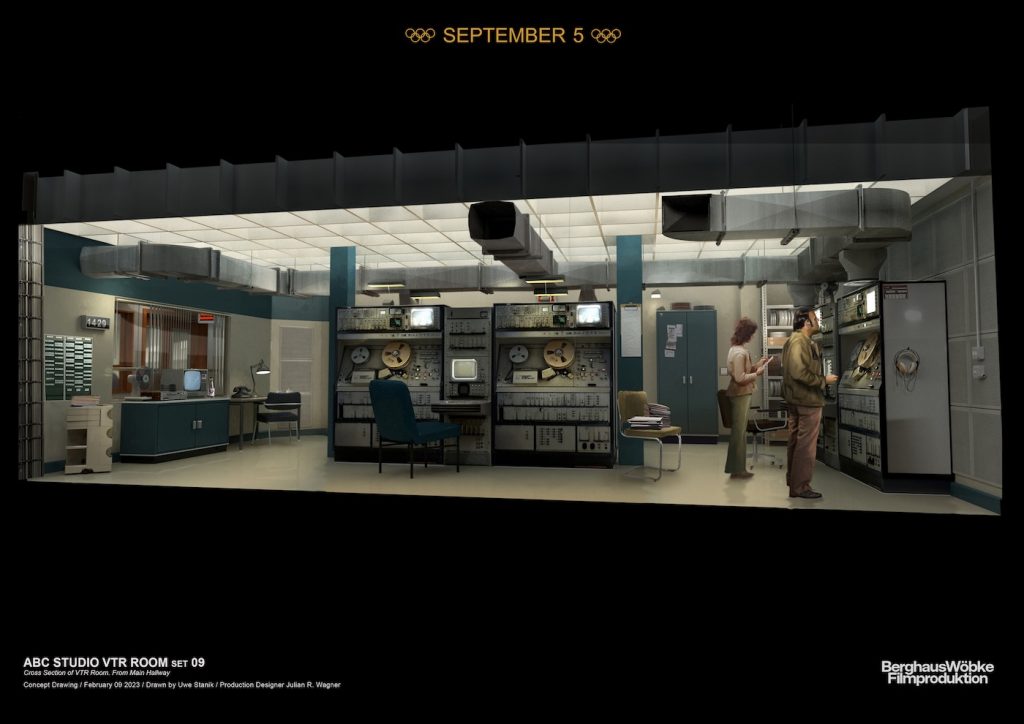
Can you give an example of how you reshaped the space?
The set in the center of the studio is called the VTR [Video Tape Recorder] room. In reality, there were several very small rooms without windows, with one machine per room. This is nothing you can show [cinematically] so we designed one big room, a bit like a NASA control room, with huge windows. This was different from the reality, but this way you could see what was going on there.
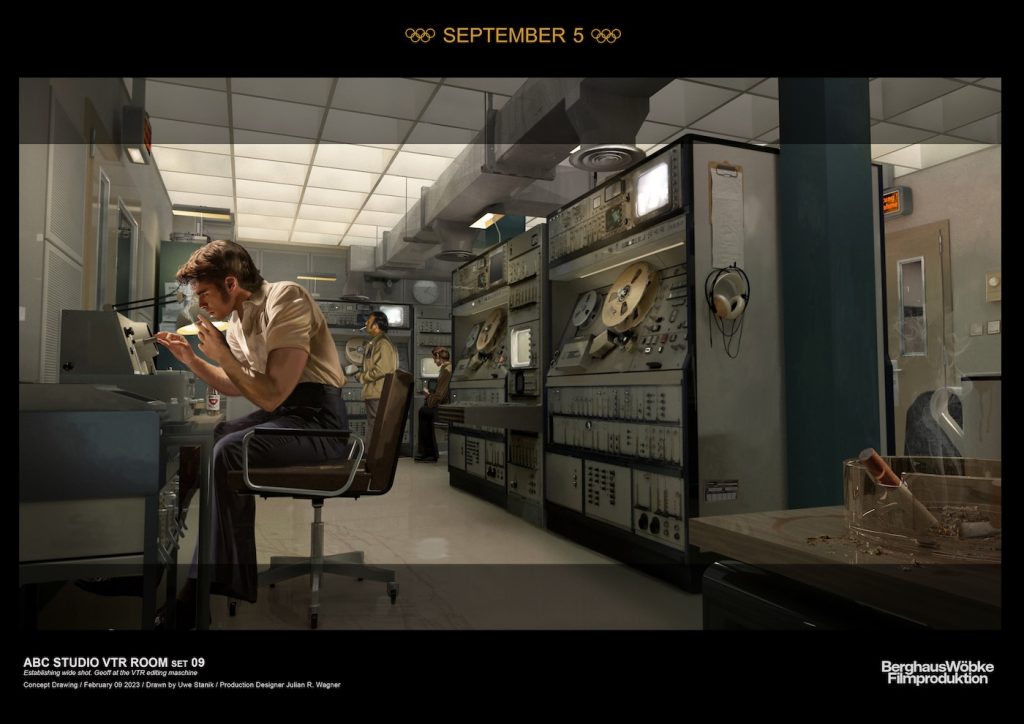
How about the control room?
That huge monitor wall was stationary in 1972, but we made it movable so that if we moved it even an inch, you could make the cast feel a bit more trapped against the wall. It’s a matter of centimeters, but all those little details made a difference.
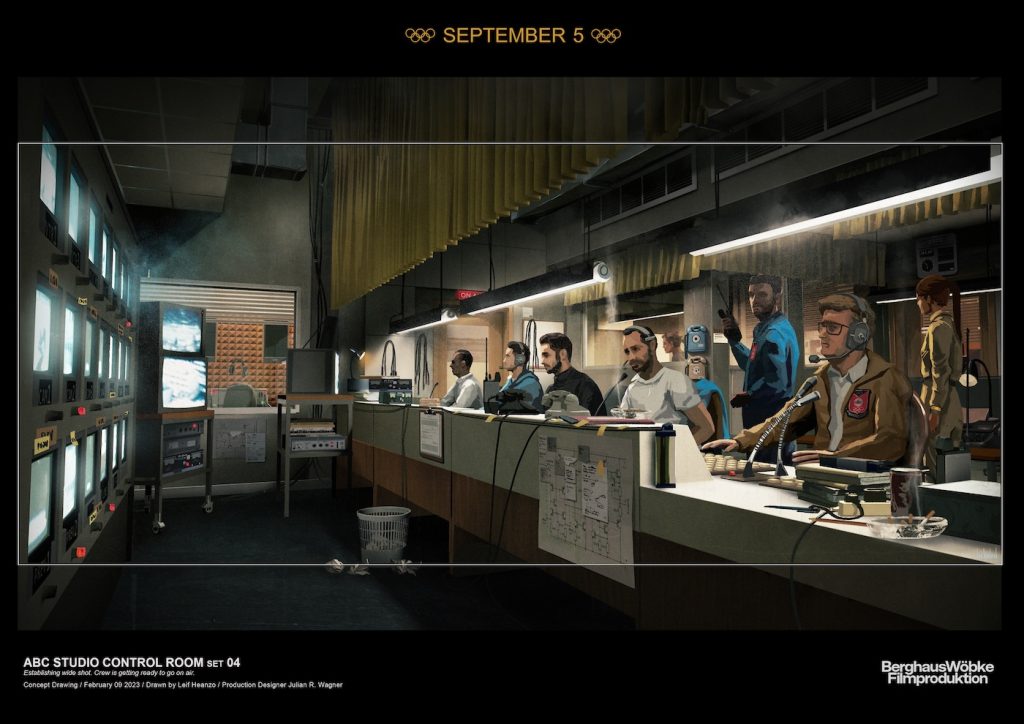
The control room is packed with buttons, switches, and archaic TV monitors. At the time, they were state-of-the-art, but now, these devices would look right at home in a museum. How did you amass all this vintage gear?
It was a long journey to get all that stuff, but there was no question that the props had to be precise and accurate. For example, we didn’t use modern screens, which would have been much easier, because we wanted that real feeling of the old curved monitors. The producer Geoffrey Mason [portrayed in the film by John Magaro] gave us photographs of the crew, so we had all these fragments, like a giant puzzle, of what the room looked like. We put together a giant mood board just for devices, and then our great production buyer, Johannes Pfaller, went to museums, private collectors, and hidden basements and found these pieces. We also talked to a technician from the old days who told us about this collector of old machines in the Netherlands so we went there, we went to Italy, the Czech Republic, collectors in the states.
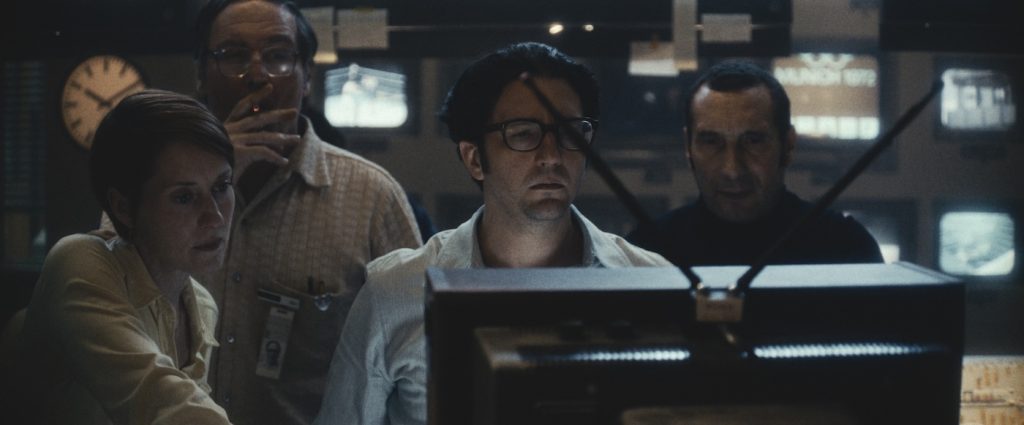
Geoff Mason (John Magaro), Jacques Lesgardes (Zinedine Soualem) star in Paramount Pictures’ “SEPTEMBER 5,” the film that unveils the decisive moment that forever changed media coverage and continues to impact live news today, set during the 1972 Munich Summer Olympics.
You built the September 5 interiors on a soundstage in Munich. When all these devices arrived at Bavaria Studios, were they ready to go?
No, far from it. Those VTR machines, which transfer analog into broadcast signals, are huge monsters that weigh a ton, and none were functional. They were so big we had to put the machines in place first and then build the room, closing the walls around them. And you can’t just plug them because they’d probably explode. Also, these machines are very loud, so you can’t run them on set. To make the machine quiet, we had technicians and prop makers sitting there day and night re-wiring miles of cables.
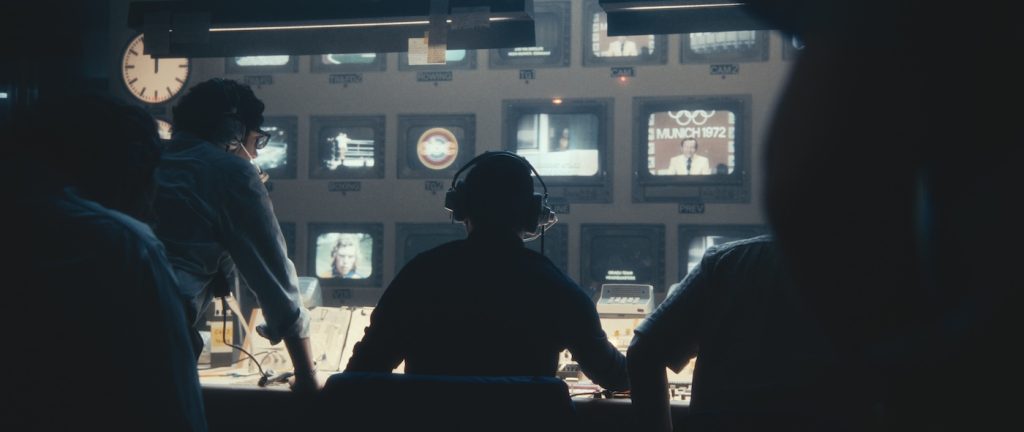
Did you have access to blueprints for the original ABC Sports studio?
We found blueprints, which helped, but the floorplan we created was different because our DP, Markus Förderer, and Tim wanted to follow the actor from one room to the next like a documentary team and go 360 degrees with the flow of action. This was a 100 percent continuous set. It was cramped.
How did you make room for lighting rigs?
We integrated the lighting within the set, which happened because of this very close collaboration between the gaffer, the DP, and me.
What kind of team do you assemble to make all the gear look right and function correctly?
We had two technicians, two prop makers, two set dressers, and two consultants who came from that time in the early seventies and worked with us in the studio refurbishing these devices. They all worked night and day shifts because we only had six weeks for the build, the devices, the set decoration, the painting, and everything else. It was crowded!
Most of the action takes place in the control room, but in one exterior sequence, terrorists have transported their hostages to the airport, and interpreter Marianna [Leonie Benesch] goes outside to report. How did you set up the airport environment?
We couldn’t access the original airport because it’s a military base. This was a night scene filmed on handheld cameras, and we needed one shot of people rushing over this field with the airport in the background, so we did a very basic analog trick that plays with false perspective: we simply recreated the airport in Photoshop and printed it on cardboard, cut it out and put it on the field. Markus ran between these tanks with his camera, following a crowd of people toward this prop we’d made, and that was it. Tim, Markus, and I really like in-camera solutions rather than just saying, “Shoot something in a field and do the rest in post.”
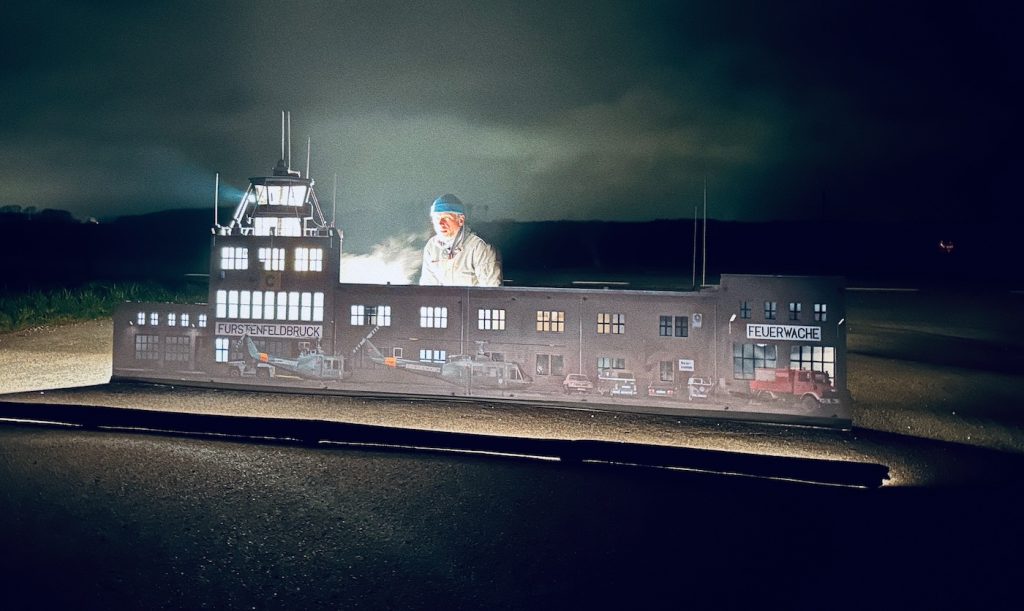
September 5 shows journalists at their best, working as a team. Did the making of this film reflect that same kind of spirit?
The production itself was a collaboration like I’ve never seen before. Everyone was passionate, and producers came on set every day. Tim has a very strong vision but leaves everyone space to fill this vision with their own creativity. It’s a beautiful way to work, and I think you can feel that in the movie.
For more films and series from Paramount and Paramount+, check out these stories:
From Ranch to Rodeo to Rig: How the Hair on “Yellowstone” & “Landman” Tells the Story
“Better Man” Director Michael Gracey on Monkeying With Robbie Williams in Bold Bio-Pic
“Gladiator II” Cinematographer John Mathieson on Capturing Robotic Rhinos & Colossal Carnage
Featured image: At left, facing others in Control Room, Roone Arledge (Peter Sarsgaard), at the Contol Room table, Marvin Bader (Ben Chaplin), Geoff Mason (John Magaro), Jacques Lesgardes (Zinedine Soualem), Hank Hanson (Corey Johnson), standing, Carter (Marcus Rutherford), Gladys Deist (Georgina Rich) and Marianne Gebhard (Leonie Benesch) star in Paramount Pictures’ “SEPTEMBER 5,” the film that unveils the decisive moment that forever changed media coverage and continues to impact live news today, set during the 1972 Munich Summer Olympics.

